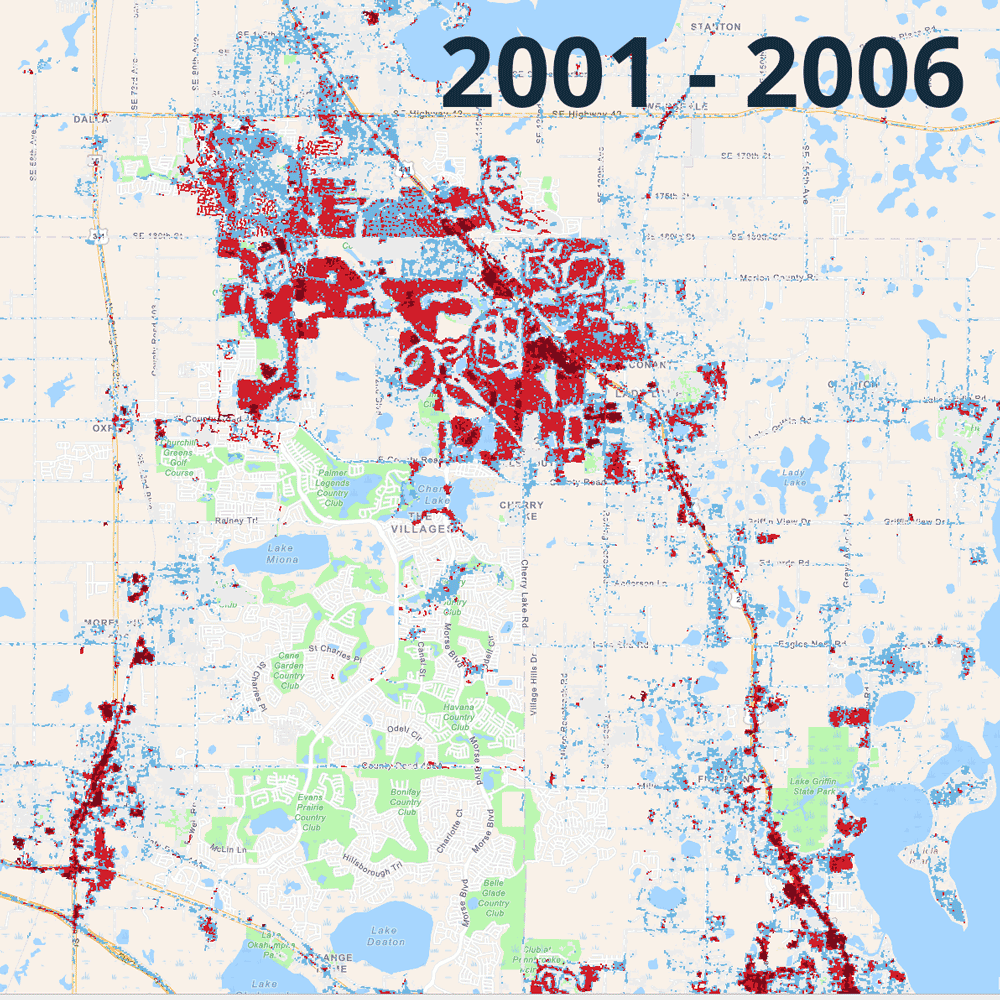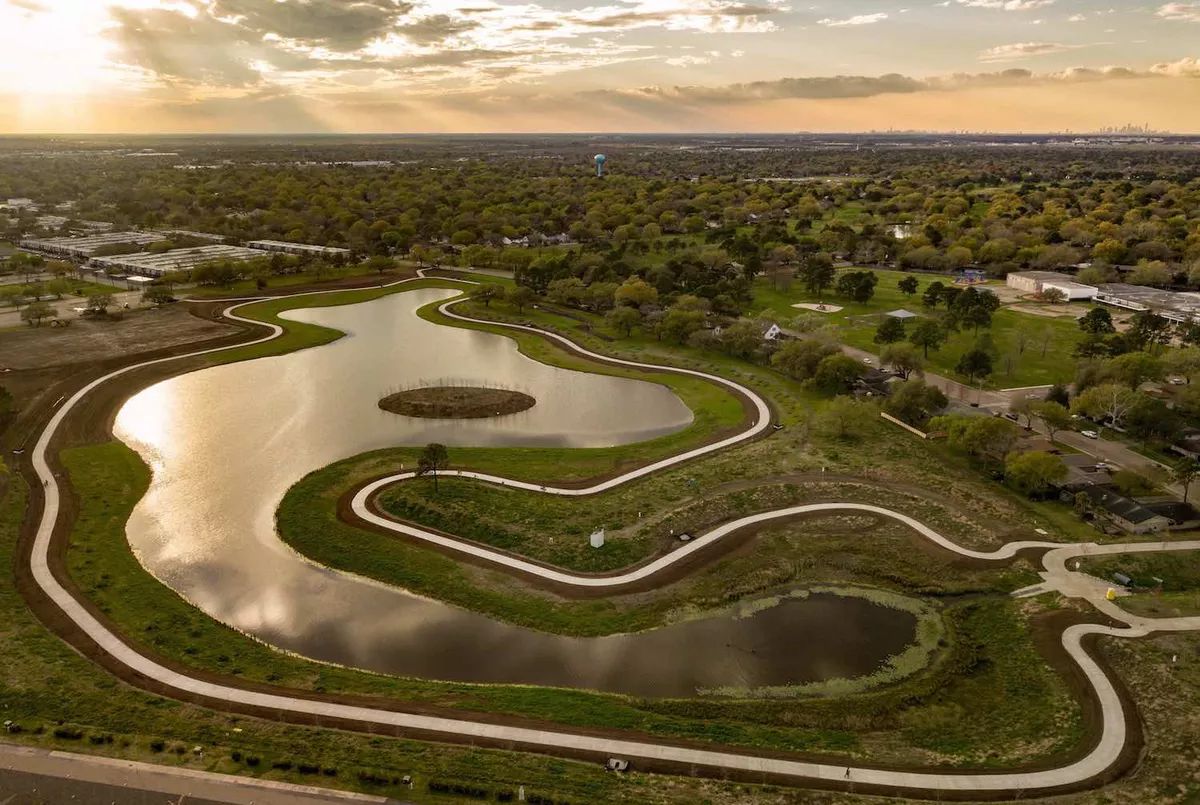A Citizen's Guide to Flooding
America's flawed foundations, practical fixes and creative funding.
1. Where it started: Building in the wrong places
No natural disaster costs us more than flooding — in both financial losses and the number of people affected — and that damage is baked into how we build.

Since 1980, flooding has cost Americans $1 trillion — two-thirds the cost of all natural disasters — including $850 billion since 2000. (Chart: National Oceanic and Atmospheric Administration)
What You Can Do
Check the true risk of the home you’re in or want to buy with FloodFactor, which — unlike FEMA — combines past and present flood data with the latest projections.
The problem:
FEMA’s flood-risk maps have for decades been the national authority on where it is and isn’t safe to build — and they’re wrong.
-
They’re incomplete, only showing flooding along coasts and rivers while ignoring flooding from regular rainfall and missing 6 million Americans at substantial risk…
-
Outdated, based on decades-old flood data, not the worsening trends we’re seeing today…
And imprecise, averaging risks across thousands of properties in every census tract, with no way to gauge individual homes or even neighborhoods.
Yet bright lines make the maps look binary: You’re either “safe” in a 500-year floodplain with a 0.2% chance of annual flood, or not safe in a 100-year Special Flood Hazard Zone with a 1% risk.
-
But everyone’s at some risk. Over a 30-year mortgage, a home in a 100-year floodplain has a 26% chance of being hit by a flood.
-
And one flood can wipe out a lifetime of savings. Most Americans invest more than 60% of their total wealth in their home.
2. Why it’s getting worse — and not just on the coasts
The East Coast is seeing a 70% rise in heavy downpours each year, but flooding affects every corner of the country — 99% of U.S. counties — and we’re making it worse.

The size of each dot represents the number of properties at substantial flood risk as of 2020. (Map: First Street Foundation)
The Takeaway
The more we delay, the more we pay. We can’t overhaul the nation’s infrastructure overnight, but it’s past time we started.
The more developments we build, the more we pave over the natural surfaces that absorb water. Urbanization increases runoff by 300–400%, leaving all that water no place to go except through our streets and into our homes.
-
We’re not going to stop building, but we can start building smarter — upgrading our aging flood infrastructure to keep pace with worsening storms and rising populations.
-
The average drainage system is 80 years old, with an expected lifetime of 75–100 years. America sees 240,000 pipe breaks per year.
Where things stand: Across the country, populations are growing faster in floodplains than outside of them.
-
But few cities account for the added runoff this growth creates, letting new construction increase flood risks for existing homes.
-
The result: We’re throwing good money after bad — paying more to fix things when it inevitably floods than to stop flooding before it happens.
Snapshot: 20 years of paving over Houston

More red = more pavement = more flooding. (Map: Flood Defenders / Data: United States Geological Survey)
The red above shows increasing pavement, leaving fewer places where stormwater can safely drain.
-
Think of all that red as a network of water highways, directing water right where we don’t want it — into people’s homes.
3. The creative ways smart counties find funding…
What counties don’t admit when they claim they can’t afford flood prevention is it often takes only a fraction of a project’s cost to unlock millions more in state and federal funds.

The Exploration Green project helped reduce flooding in the Clear Lake suburb of Houston, TX. It was funded in part with municipal bonds. (Photo: Joe Bibby)
There are four proven methods to come up with a downpayment if it’s not in the budget:
-
Stormwater fees charge property owners a small sum every year to support flood protection, typically linked to property size.
-
Development impact fees charge developers a one-time fee to offset the cost of installing new drainage for their construction.
-
Local option sales taxes add a penny per dollar, sometimes just a half-cent, to everyday purchases.
-
Reallocating property tax revenue can provide governments with money for flood protection in a pinch.
The math: If a county raised just $1 million with one of those methods, it could borrow 20 times that by issuing municipal bonds — a common practice for priority projects like a new school or bridge.
-
With $20 million raised from bonds, it could then qualify for state and federal cost-sharing programs that often add $2 to every $1 raised locally — turning that $1 million downpayment into $60 million.
Where it’s working:
-
In Houston, TX, over 85% of voters approved the use of municipal bonds to provide $2.5 billion for flood prevention, securing $2 billion more in federal matching funds.
-
Miami Beach, FL, used a $20 stormwater fee to raise $200 million from municipal bonds, covering the cost of raising roads and installing pumps to stop flooding along hurricane evacuation routes.
-
South Holland, IL, took a different tack, offering homeowners a 25% rebate on home improvements for flood protection since 1994, reducing the burden on county taxpayers.
4. …And the simple fix those funds could pay for
Ponds. They’re one of the least intrusive and most cost-effective ways to reduce flooding, giving excess stormwater a place to go that isn’t someone’s home.
- Plus, they can create beautiful parks, filter pollutants out of runoff and even provide water for irrigation.
 Installation of a retention pond in Atlanta’s Old Fourth Ward Park has dramatically reduced flooding in surrounding neighborhoods and created valuable green space to boot. (Photo: Historic 4th Ward Conservancy)
Installation of a retention pond in Atlanta’s Old Fourth Ward Park has dramatically reduced flooding in surrounding neighborhoods and created valuable green space to boot. (Photo: Historic 4th Ward Conservancy)See for yourself
We rounded up some beautiful, innovative examples from Georgia (above) and Texas, all the way to Washington state.
The catch: They take space and need regular maintenance to keep drains clear and water flowing freely in and out.
But their perks far outweigh those downsides, offering three benefits other fixes don’t:
-
No one has to move as long as there’s already space, relieving homeowners of the massive burdens of a home elevation or buyout (see below).
-
They’re dirt cheap, with construction costs as low as $20,000 for a million-gallon detention pond once land has been purchased.
-
Parks are easy to add, protecting communities while improving their quality of life.
5. Homeowners’ last resort: Build up or buy out
Bad news: not every home can be saved from flooding. If you’re one of the hundreds of thousands of Americans with a home that can’t be protected, you’ve got two choices:

-
Put it on stilts — raising a home above flood level works, but it’s extremely expensive and inconvenient, requires tons of maintenance and radically changes the feel of a neighborhood, if the HOA even allows it.
-
Sell it to the government — using the money to move to higher ground while the government turns the lot into runoff overflow.
The problem: Securing a FEMA buyout is a painful, bureaucratic slog that can drag out over half a decade.
-
That process has worked for more than 40,000 homes in the last four decades, but the program is billions of dollars in debt with millions of homes projected to need buyouts in the coming years.
-
“In their current form, FEMA’s programs are not capable of scaling up to deliver the needed assistance,” a Yale analysis found.
Your best bet is to ask your local government to step in and fund your buyout, so you can move on before the next flood hits. It wouldn’t be the first time:
-
One North Carolina county expects long-term savings of more than $300 million after funding buyouts for 700 families and businesses, opening up 185 acres of public space.
-
Another in Texas combined local and federal funding to buy more than 2,500 flood-prone structures since 1985. That’s opened up 1,300 acres and gotten thousands of families out of harm’s way.
We are Flood Defenders
A non-profit amplifying the power of our members' voices to demand and receive better flood protection

